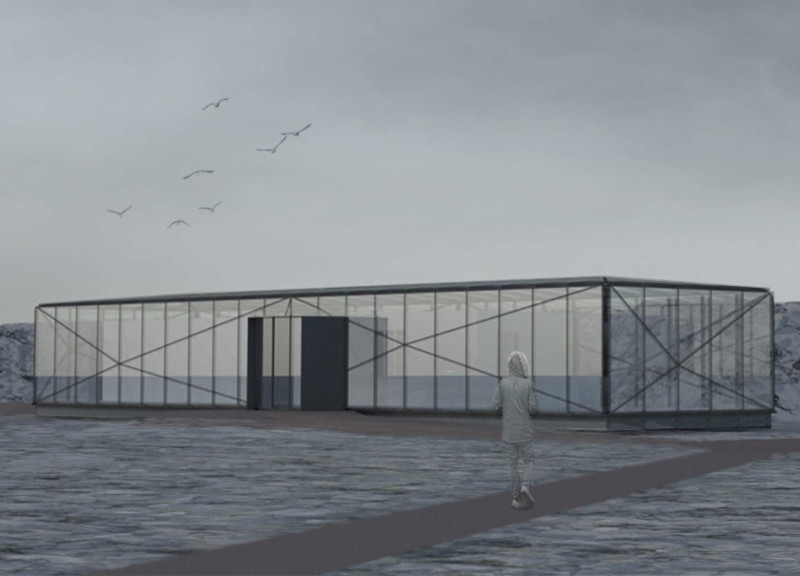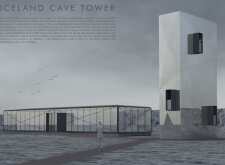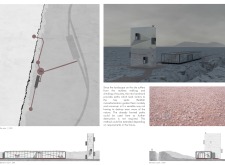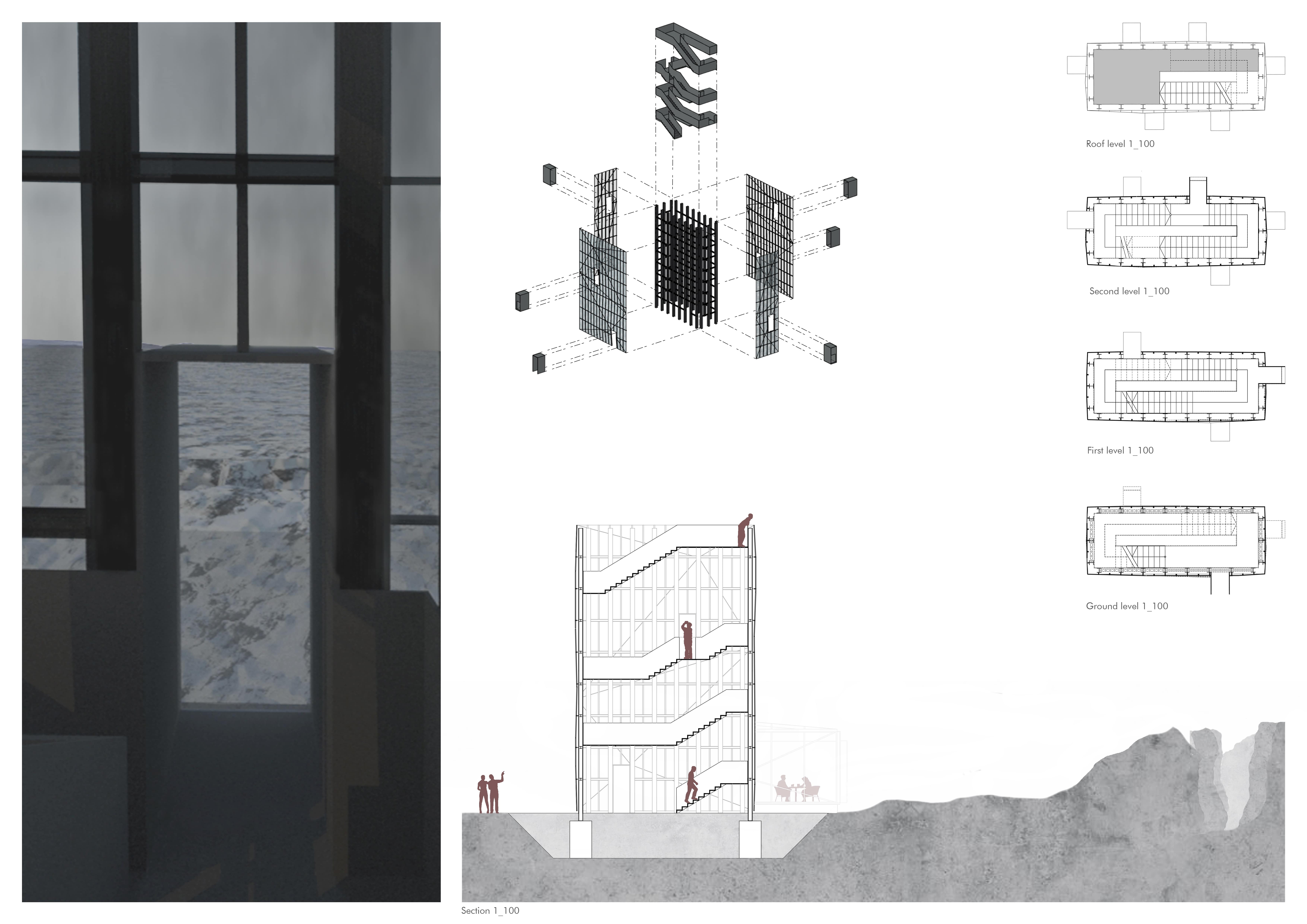5 key facts about this project
The Iceland Cave Tower is an architectural structure set in the unique geological landscape of Iceland, known for its varied natural features such as geysers and lava fields. It serves both as a visitor attraction and as a landmark. The design concept focuses on creating a connection with the surrounding environment, responding to the interaction between the European and American tectonic plates that shape the land.
Architecture Concept
The design centers on harmonizing with the landscape. Triangular glass elements are arranged at various angles to reflect the area’s geology. This thoughtful arrangement allows light to play across the surface, creating a visual interplay with the natural surroundings. The building’s form makes it seem as if it is part of the terrain, reducing its visual impact and enhancing the sense of space.
Environmental Integration
Attention is paid to the environmental impact of increasing visitor traffic in the area. Pathways are strategically designed to guide tourists to key viewpoints. These paths are made of reddish macadamization, which helps direct foot movement while minimizing additional strain on the fragile landscape. This approach reflects a commitment to preserving the environment while still allowing for exploration.
Materiality
Construction materials include glass and ferro concrete, selected for their durability in Iceland's harsh weather. The glass façade allows the structure to adapt to changing light and weather conditions. This adaptability not only enhances the aesthetic experience but also fosters a sense of connection between the visitors and their natural surroundings.
As visitors approach the tower, they find a façade that changes with the daylight, mirroring the colors and textures of the landscape. This interaction invites a deeper appreciation of the geology while serving as a reminder of the beauty found within the natural world.






















































